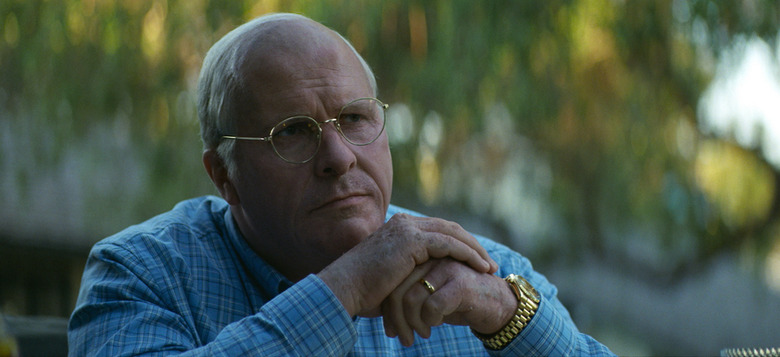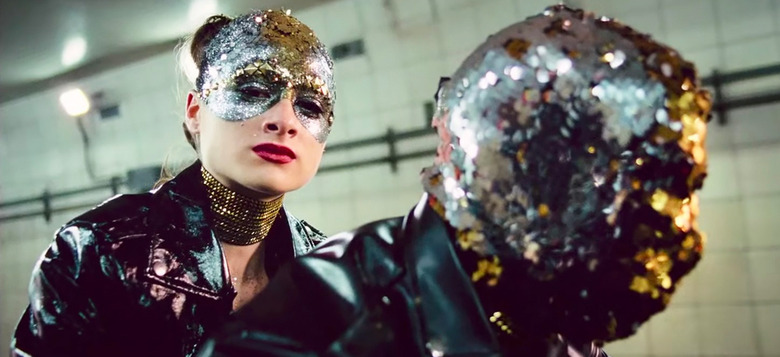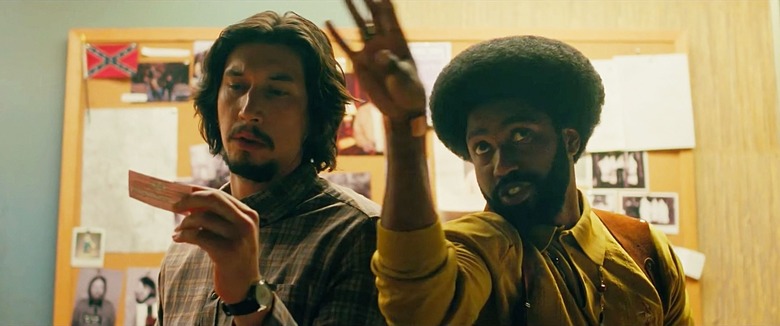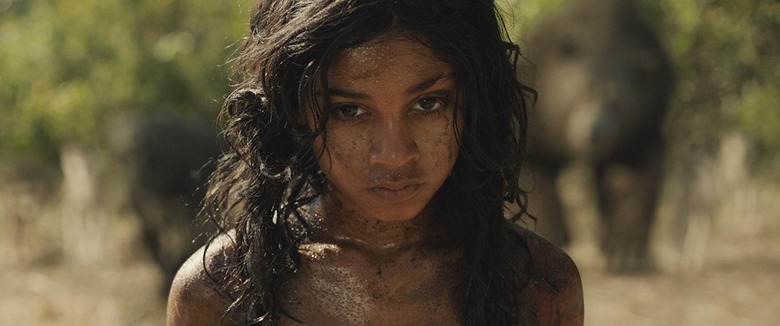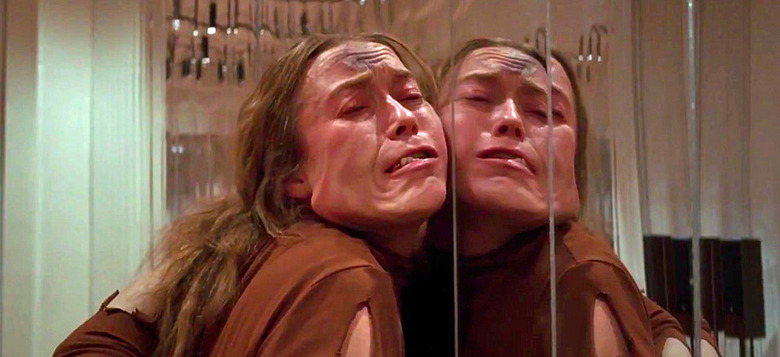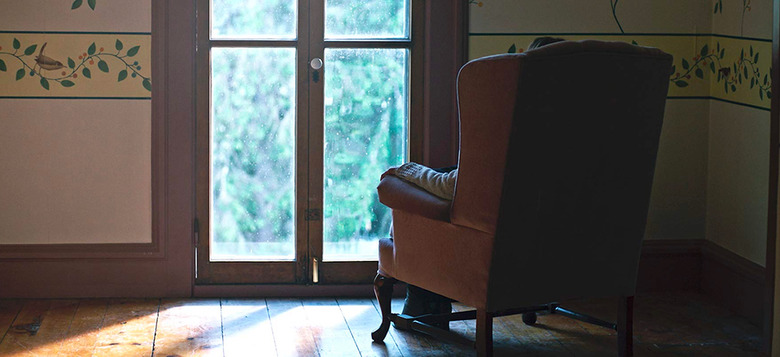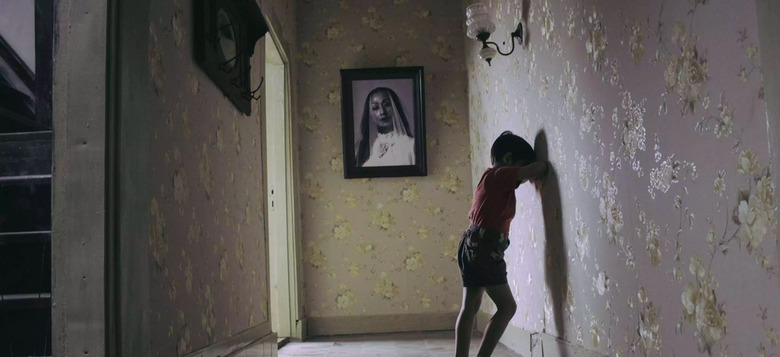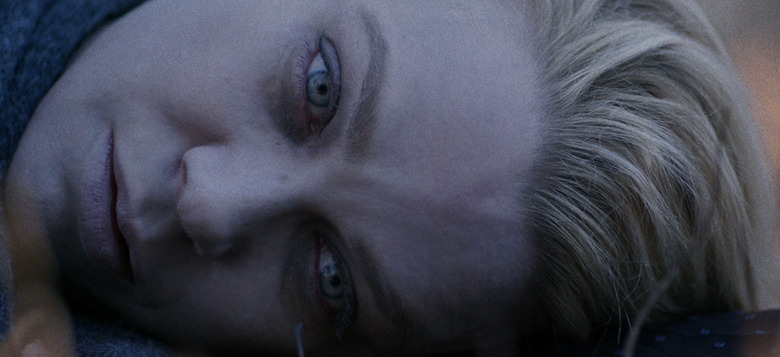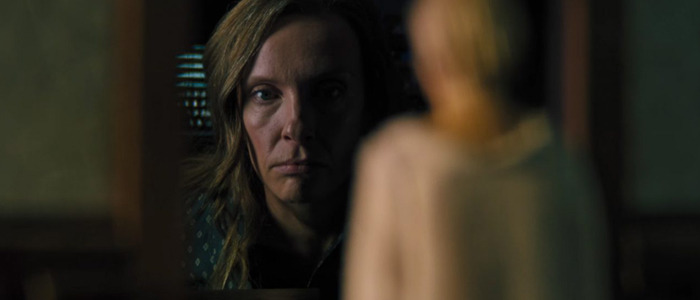The 10 Most Disturbing Movie Scenes Of 2018
We're nearly a month into the new year, but before we let 2019 rejuvenate our motivations, why not take one last stroll down 2018's memory lane? More appropriately, the thorn-lined backroad of memory lane where there is no light – only torment and pain. Fun!Let's face the darkness from 2018's cinematic slate as a means of pushing forward. Movie moments that "went there" or invaded our nightmares. These won't all be horror movie references, mind you. Oscar hopefuls and genre demons both produced their fair share of fuck-you-up depravity. Why not run down some of the year's most disturbing moments in film, because it's me, Mr. Kill Ya Good Vibes! Always on brand, never to disappoint.
10. The Heart Transplant Montage (Vice)
Adam McKay's Vice - honored by the Golden Globes as a "comedy" – is a provocateur's biographical glimpse into America's at-odds political landscape with Dick Cheney as central focus. A portrait of a "mastermind," satire of power, and exposure to manipulation from within. Washington D.C.'s silent puppetmaster pulled strings that forever shaped the progress – or regression – of our United States to its current "greatness." If you've seen The Big Short, you know McKay has no problem voicing his opinions without holding back. At the end of Vice, this truth remains more self-evident than ever.The events that spiral out of control in Vice - Cheney's steamroll over multiple government figures, foreign war declarations, chess game pawn sacrifices – culminate with footage from tragedies that befell our nation under Cheney's tenure sprinkled between his Senate hopeful daughter's denouncement of gay marriage (despite her sister being a lesbian). In Hollywoodized form – as Christian Bale schlubs around eating danishes with sticky fingers – McKay toys with bait-and-hook fishing metaphors while overplaying Cheney's actions as abrasive political humor. Two hours of heart attack interruptions and "W's" cowboy antics, until we're reminded how it all ties back into our government's – for lack of better phrasing – business model. The winding of unfathomable motivations into realities we're forced to live once again and, well, it's *a lot* to digest.This is even before Bale – as Cheney – breaks the fourth wall and defends himself for being the ruthless decider our country so desperately needed, followed by a left vs. right focus group scuffle that encapsulates the height of "fake news" outrage. One nation, under corruption, with liberty for all but justice only for some.
9. Opening With a Bang (Vox Lux)
"An unusual set of circumstances brings unexpected success to a pop star." The description for Brady Corbet's Vox Lux flaunts ambiguity as to shock and paralyze with the film's gutting open. The event – a nightmare for adults and children alike – is a school shooting. Said circumstances resonate today's problematic gun control debates and rising death tolls. Immediate thoughts of Parkland and Santa Fe and too many similar headlines flood like a burst dam, kickstarting Corbet's cultural commentary on celebrity culture with a devastating tone.As someone who avoids trailers whenever possible, going into Vox Lux suspiciously blind made for one of 2018's most sobering beginnings. Everyone's story starts somewhere, and for Natalie Portman's Celeste, it's inside a classroom next to cowering classmates forced to stare down a shooter who's about to open fire. Blood sprays. Celeste – despite injuries – survives. Her first vault into stardom births from hospital recuperation and a future memorial vigil performance. That opening – shots fired at a deafening volume – plants audiences inside America's most horrifying domestic forms of attack on the rise. An experience that's impossible to shake, comprehend, and certainly forget.
8. Reliving the Past (BlacKkKlansman)
For roughly 120 minutes, BlacKkKlansman balances Ron Stallworth's Ku Klux Klan infiltration with a lighter jive that loses no importance – but doesn't register as seismically bleak given the circumstances. Spike Lee entertains, teaches, and brings to life an unbelievable story, fully aware of the cyclical horrors that await right before credits hit. Stallworth, now off his undercover beat, stares down a flaming cross in his final scene to showcase how when pressures to subdue racism are lifted, injustice's ugly head rears right back up. Although, that's not even the shot I want to discuss.After Stallworth's glazed over face glides towards the camera, Lee hits us with inescapable truth.Out of nowhere, Lee launches into news footage pulled from race relations coverage of today. Tiki torch marches, government officials defending white supremacists, hateful 2018 rhetoric that repeats the same values Ron Stallworth fought against – all after we've been sweetened by lead actor John David Washington's charms. We're taken back to Charlottesville's Unite the Right rally, and watch a car plow through a group of protesters condemning the far-right's march. Heather Danielle Heyer's dedication appears on screen – the event's tragic casualty – and that's when structure comes tumbling down. Backcountry racist yokels, Adam Driver's transformation, Stallworth's calls with David Duke (Topher Grace). Everything we've watched leads to history repeating itself, and how aligned the actions of 1970s civil rights movements are the *same* fights we're battling today. It shakes, rattles, and strips all armor, chills straight to your core.Lee's ace-up-his-sleeve held so angrily through gritted teeth throughout BlacKkKlansman's entirety.
7. Chewin’ For the Likes (Like Me)
Disclaimer: I don't do well with vomit. Enter Robert Mockler's Like Me, a warning of social media overconsumption in our digital age. How better to represent too much of something that can rot away your insides, cause internal discomfort, and project – literally – an adverse reaction? Stuffing your face with comfort foods until they come spewing out.At first, Mockler's artistic eye focuses close-up on Addison Timlin's mouth as her hopeful insta-famous experimental photographer mashes gummies or pizza or other unhealthy treats between her teeth. Neon-died fructose sugars chomped and gnawed by pearly whites. Then Larry Fessenden introduces himself into the fold – a model victim of sorts at Timlin's mercy. He's the one stuffed full of cheese puffs, milk, and junk snacks until the point of nausea – where Timlin's begins to press against his tummy. You can assume where this goes as a gross-out metaphor full of bile.
6. Trophy Case (Mowgli: Legend Of The Jungle)
Andy Serkis' adaptation of Rudyard Kipling's famous jungle adventures is one of the year's most grisly surprises. Forget the war-scarred characters and festering wounds, even. We focus here on a runt albino wolf child named Bhoot – voiced by Serkis' son Louis Ashbourne Serkis – and his demise. Bhoot confuses pack bullying with playful jests, exudes boundless optimism through cheek-to-cheek smiles, then vanish for some time after Mowgli (Rohan Chand) – his only friend – lays a mean-spirited verbal attack on thick as molasses. How sad an exit, only outdone by Bhoot's return as a TAXEDERMIED HEAD IN HUNSTMAN LOCKWOOD'S (Matthew Rhys) TROPHY COLLECTION.The emotional sledgehammer of having Bhoot's final moments be a psychological dismantling by his most loyal brother worsens Mowgli's discovery of his wolf brethren's decapitated, STILL HAPPY-GO-LUCKY SMILIN' HEAD – holy shit. The Jungle Book: Dark. DCU, eat your heart out.
5. Telekinetic Beatdown (Suspiria)
Luca Guadagnino's Suspiria is a sobering, psychotic, witch-fueled reimagining of Dario Argento's colorful 70s import. Critics and audiences debate the merits of female representation and the rise of "Mothers," but my focus is on an early dance number. Susie Bannion (Dakota Johnson) looks to stun Markos Tanz Company's instructors, and in this specific scene, Madame Blanc (Tilda Swinton) permits the hungry pupil her chance. Unfortunately, this spells death for a less ambitious performer.Olga (Elena Fokina) finds herself locked in a mirrored practice studio. Elsewhere, Susie begins to unite with the Markos facility's inner heartbeat. She writhes, flails in primal bursts of choreography, and becomes one with Madame Blanc's vision. What Susie doesn't know is each swing of her arm, each jump-and-land, physically pummels Olga like she's in the room. Fragile limbs snap, flesh ripples as if punched in slow motion, until Olga's left in a drooling pretzel contortion shape. Punishment on a disturbing level felt with each strike – Guadagnino's greatest command of tone throughout all of Suspiria.
4. Bad Connection (The Witch in the Window)
A father-son duo, the fixer-upper household they're refurbishing together, and a presence who refuses to leave. This is Andy Mitton's The Witch In The Window, which reaches a point where son Finn (Charlie Tacker) is sent back home via bus to his mother's city apartment because ghostly activity has become too dangerous. Father Simon (Alex Draper) resumes construction alone, only for Finn to return later on after sneaking away from his transportation – OR DID HE.It's not tough to sniff the moment out, given how the film's "witch" manipulates both man and child throughout. "Finn" waltzes back into frame, interacting with Simon, who grabs the phone to inform his estranged wife that their kin skipped his return trip. Much to Simon's surprise, she confirms: "He's been pretty quiet since he got back today." We hear the dialogue, Simon hears it via telephone, but "Finn" does not as he sits cross-legged on the floor next to papa. Panic and dread wash over Simon as he calmly speaks back into the receiver not to alert whoever sits by his side, the camera's frame placing both characters side by side. Try not spiking hairs when imagining yourself in Simon's position.
3. Ghost in the Hallway (Satan’s Slaves)
Sorry, Slashfilm. I'm not done praising Joko Anwar's Satan's Slaves *quite* yet. In a film with more genuine scares than any three of 2018's mainstream US horror films combine, one midnight pee break stands as Anwar's crowning achievement in horror. Disturbing enough to cause a jolt even with the lights on while you stream Satan's Slaves on Shudder from the cushy comforts of home.Two small children arise in the middle of the night to empty their bladders. Upon returning to their bedroom, tiny Ian (M. Adhiyat) pauses at the entrance to a long hallway. "Scary," Ian signs. "Mom." Brother Bondi (Nasar Annuz) sees nothing but a picture of "Mom" dead across the hall, grabs a blanket, and the two start walking towards the portrait. Bondi tosses the sheet in hopes of covering said artwork and as it floats down, drapes over an invisible form. A standoff between ghost and children freezes for a few frames, Bondi nudges Ian to back away – Ian covering his eyes – and as they turn, the figure lunges with a guttural bellow.It's such an easy scare, but as James Wan's proficient manipulation of shadows and the paranormal elevates his Conjuring movies, Anwar's replication achieves the same nerve-shredding effect.
2. Ceiling Creeper (Pyewacket)
You know *that* moment in Hereditary? Adam MacDonald staged it first. Pyewacket the original, Hereditary the successor. I don't state this to claim Ari Aster plagiarized or stole his most unsettling shot selection. Far from it. More that Hereditary is the 2018 horror discovery outlets still pine over while Pyewacket remains one of the year's underseen gems. Credit deserved where credit's due, and hopefully the nod draws more eyes towards MacDonald's ode to grief, adolescent ignorance, and manifested anger in satanic form.The scene in question spies Leah (Nicole Muñoz) – sound asleep – after she summons a trickster demon named Pyewacket. Exploratory cinematography scans her room, her bed, and then to a ceiling corner where this shadowy black mass exists. Back to Leah. Back to the blot. Then legs protrude, and we realize it's a figure wedged between ceiling and wall, as predators might stalk its prey. Pyewacket emerges from darkness and peers over Leah's slumbering body, and thus an introduction is made.
1. One-Two Punch (Hereditary)
To be fair, Ari Aster's Hereditary packs two punches worthy of this list. I'll break them down.A. Hereditary's "ceiling scare" is masterful. Peter (Alex Wolff) lays in bed, Pawel Pogorzelski's frame curiously wide given Peter's body occupies only the bottom-lefthand space of screen. Then your eyes adjust. The shadows reveal mother Annie (Toni Collette) grasping onto Peter's bedroom wall like a sticky-fingered reptile. We know Annie's broken at this point, and imagination spins around what action she's about to take. Provoked anxiety and exasperation makes for a most chilling, downright destructive visual glimpse into 2018 horror.B. You know what's coming. Let's hop right back in Peter's speeding car where Charlie (Milly Shapiro) – suffering from allergic asphyxiation – attempts to breathe in fresh air like a dog enjoys an opened window. Peter – unaware – veers to avoid roadkill, decapitating his sister in the process when her head smacks into a planted telephone pole. Aster doesn't show her corpse immediately, just Peter's paralyzed reaction as he then drives home, exits the car, and shuffles into bed. It's not until Annie finds her daughter's lifeless body that Aster *then* cuts to Charlie's discolored head discarded like trash on the roadside, now covered in insects.

